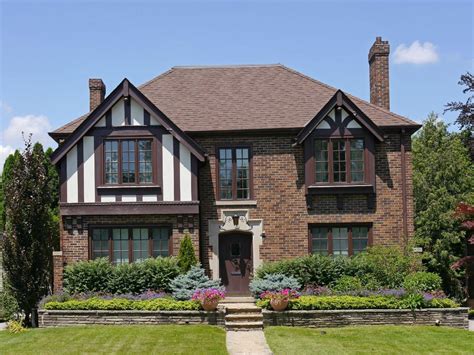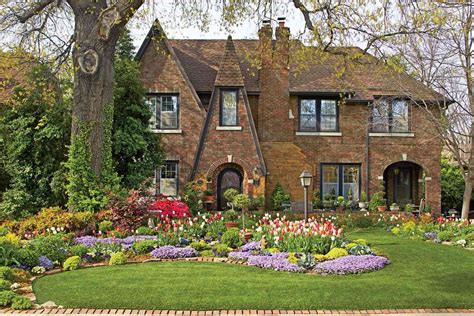what is tudor style | tudor examples what is tudor style What is a Tudor-style house? Known for pitched gable roofs, decorative wood trim, and old-world appeal, this architectural style was once a . Navy Blue grained leather verso side. Gold-color hardware. LV Circle Nautical buckle. LOUIS VUITTON Official USA site - Discover our latest LV Circle Nautical 20mm Reversible Belt, available exclusively on louisvuitton.com and in Louis Vuitton stores.
0 · what is tudor style home
1 · tudor style interior
2 · tudor style home description
3 · tudor interior design characteristics
4 · tudor examples
5 · pictures of tudor style houses
6 · examples of tudor style homes
7 · characteristics of a tudor house
Crafted from iconic Monogram or Damier canvas, calf skin leathers, or modern technical materials, many belts offer a reversible option. LOUIS VUITTON Official International site - Discover our latest Men's Belts collection, exclusively on louisvuitton.com and in Louis Vuitton Stores.
what is tudor style home
chanel small flap with handle
tudor style interior
What is a Tudor-style house? Known for pitched gable roofs, decorative wood trim, and old-world appeal, this architectural style was once a .The Tudor architectural style is the final development of medieval architecture in England and Wales, during the Tudor period (1485–1603) and even beyond, and also the tentative introduction of Renaissance architecture to Britain. It followed the Late Gothic Perpendicular style and, gradually, it evolved into an aesthetic more consistent with trends already in motion on the continent, evidenced by .Tudor style, type of British architecture, mainly domestic, that grafted Renaissance decorative .
The Tudor Revival-style home embraces unusual elements, a storybook form, and a touch of rebellion. Here's how to identify a Tudor-style house. Tudor architecture originated in England and Wales during the Tudor period of 1485 to 1603. Tudor-style homes feature half-timbered frames that contrast their white stucco exterior, making them easy to identify. The . Tudor architecture is a type of architecture that was popular in England during .

Tudor style houses, also called Tudor Revival or Mock Tudor, are two-to-three . The Tudor style is a variation of the late Medieval Period English architectural style. Tudor style architecture is most easily recognized by its heavy use of timber framing, tall chimneys, and large, multi-paned windows.
chanel flap smal
Tudor homes look like something straight out of a fairytale, with a charming style that takes its cues from medieval English architecture.Their distinctive wood-faced facades and white-stuccoed walls were popular with . Tudor is an architectural style that was prevalent in England and Wales during the latter part of the Middle Ages, beginning in the late 15th century and extending post medieval times into the . Mentioning the Tudor arch, which is a wide arch with a slightly pointed apex, is helpful, but other than that, the fact that this definition is mostly about setting—in England after the Perpendicular style (the last version of English Gothic) and just before the Renaissance—reinforces the fact that Tudor architecture is a transitional style. Anthony Masterson. The facade of a Tudor-style home is often dominated by one or more prominent, steeply pitched cross gables. This home features two front gables and brick wall cladding.Brick became the preferred wall surface for even the most modest Tudor cottages after masonry veneering was popularized in the 1920s. The arches surrounding the portico .

A Tudor style house is a home built with architectural features which reference Tudor and Medieval architecture. While one might assume that Tudor style homes were built during the 1500s, in fact this term in architecture refers to a specific style which grew popular in the 1800s and persisted through the mid 20th century.Tudor style houses usually had casement windows grouped in rows of three or more framed in either wood or metal. Double-hung windows were less common. Windows were often divided into six or eight panes and were sometimes made up of rectangles and other times arranged in a diamond pattern. Windows were usually placed symmetrically in the main gable. Tudor-Style Home Interiors. Catherine McQueen // Getty Images. A knock against Tudor-style homes is often that they can be gloomy inside because of their heavy exterior masonry cladding and wood timbers. “I think people assume that they’re dark inside, which is an unfair characteristic, having lived in one myself,” Murphy says. .
One look at a Tudor style house and you’re instantly transported to the English countryside. This distinct architecture dates back hundreds of years, borrowing elements of Renaissance and Gothic design, and later experienced a revival in the United States that continued to grow in popularity through the mid-twentieth century.Similar to cottage homes, .
The Tudor style made one of its first appearances in Britain in the late 1860s at Cragside, a hilltop mansion of eclectic architectural styles that incorporated certain Tudor features; Cragside was designed by the architect Norman Shaw.
The Decline of the Tudor House Style. Despite its enduring popularity and charm, th e Tudor House style u ltimately fell out of favor in the 17th century, as tastes and trends shifted towards new architectural styles. As England entered the Stuart period, the Baroque and Palladian styles emerged as the dominant architectural forms, emphasizing .
Tudor style architecture is characterized by incomplete timber beams, slanting roofs, and overhangs. This style originated in Medieval England, and under the patronage of the emperors and royals, it became popular among the masses. It spread rapidly for a couple hundred years, before receding away into the past. .
From Tudor-style four poster beds and wooden dressers to heavy tables and plenty of ornate carvings, dark wood is the material that is seen in all these items as well as the floors. The only bright colors you will see in older Tudor homes . Tudor-style home exteriors can be adorned with narrow, gabled, or oriel windows, giving them an old-world charm many find irresistible. Characteristics of Tudor Houses. Tudor houses, renowned for their half-timbered construction, are a harmonious blend of natural materials and structural durability. This technique uses a wooden frame for the . Tudor architecture refers partly to the architectural style that emerged between 1485 and 1603 when artisans built sophisticated two-toned manor homes combining Renaissance and Gothic design elements. What is a Tudor-style house? Known for pitched gable roofs, decorative wood trim, and old-world appeal, this architectural style was once a lot more common.
The Tudor architectural style is the final development of medieval architecture in England and Wales, during the Tudor period (1485–1603) and even beyond, and also the tentative introduction of Renaissance architecture to Britain.
Tudor style, type of British architecture, mainly domestic, that grafted Renaissance decorative elements onto the Perpendicular Gothic style between 1485 and 1558. The Tudor Revival-style home embraces unusual elements, a storybook form, and a touch of rebellion. Here's how to identify a Tudor-style house. Tudor architecture originated in England and Wales during the Tudor period of 1485 to 1603. Tudor-style homes feature half-timbered frames that contrast their white stucco exterior, making them easy to identify. The Tudor architectural style made its .
Tudor architecture is a type of architecture that was popular in England during the 16th century, during the reign of the Tudor monarchs. These were six monarchs who ruled England from 1485 to 1603, starting with Henry VII and ending with Queen Elizabeth I. Tudor style houses, also called Tudor Revival or Mock Tudor, are two-to-three-story homes with brick exteriors featuring large portions of white stucco and decorative half-timbering. These homes have a romantic and slight medieval appearance, making them a truly unique home style.
Tudor architecture is a style of building that started in England and Wales from 1485 to 1603. It blends elements from the Renaissance with the older Perpendicular Gothic look. You'll know Tudor homes by their half-timbered frames, which show wood on the outside and are filled in with white stucco.

95 CM. 100 CM. 110 CM. Call for inquiry. Check availability in store. Product details. Gifting. The LV Initiales 40mm Reversible Belt is offered in an array of primary colours as well as in classic brown Monogram.
what is tudor style|tudor examples



























